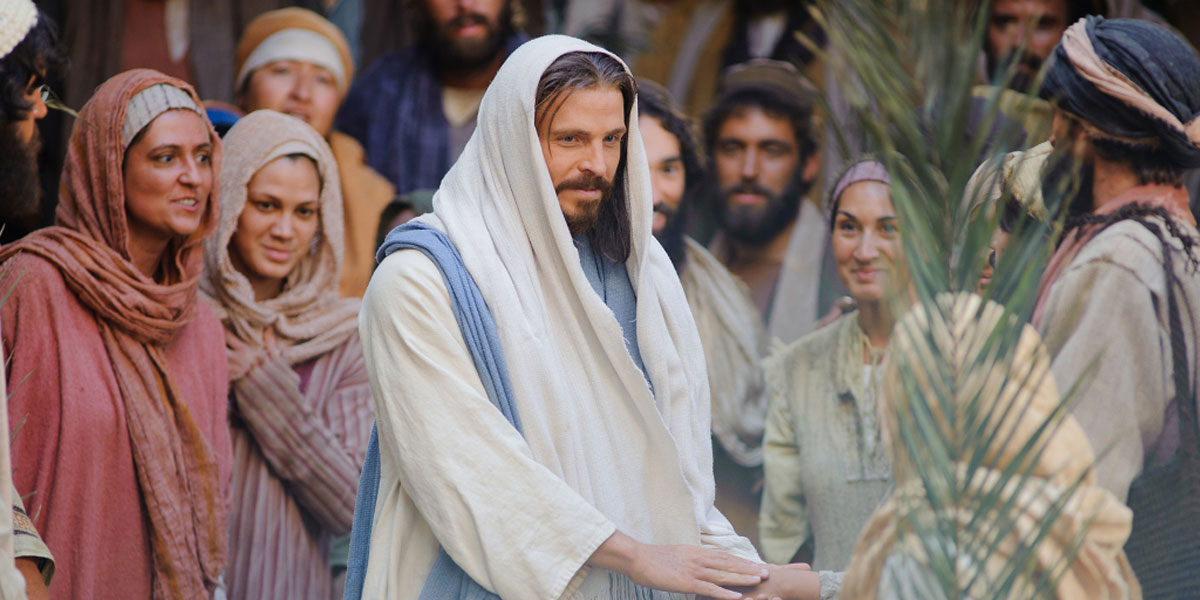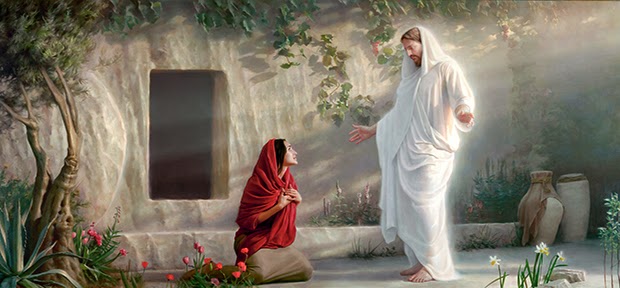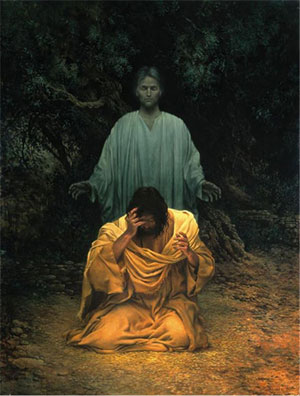You are here
How Are Atonement, Resurrection, Judgment, and Redemption Interconnected?

Mosiah 3:17
Principle
The Book of Mormon is one of the most important sources available in the world today for understanding Christ and His mission.1 Several sections in this book contain extended teachings about Christ and His Atonement. A careful analysis of scriptures from the Book of Mormon, in their contexts, teaches and reveals several interconnections between the Atonement, resurrection, judgment, and redemption that might not be obvious at first.2
The Book of Mormon, for example, states that Christ was called and prepared to be our Savior and Redeemer “from the foundation of the world.” Alma used this knowledge in explaining that people can be “called and prepared from the foundation of the world” to fulfill certain callings in life (Alma 13:3, emphasis added) and that this happens “through the atonement of the Only Begotten Son, who was prepared” (Alma 13:5, emphasis added). Just as we were called and prepared to fulfill certain callings in this life, our Savior was foreordained by God the Father in the divine council to fulfill his role.3
The Book of Mormon states very concisely that Christ then came to earth and willingly suffered and died to redeem all mankind from the negative effects of the Fall and to pay the penalty for humanity’s sins.4 King Benjamin stated, referring to little children, “as in Adam, or by nature, they fall, even so the blood of Christ atoneth for their sins” (Mosiah 3:16). However, in the next verse he stated that “there shall be no other ... means whereby salvation can come unto the children of men, only in and through the name of Christ” (v. 17, emphasis added).5 The atonement of Christ not only redeems little children, it redeems all mankind from death, and will redeem all from the effects of their sins if they will be submissive, humble, and repentant.6
One profound aspect of the Book of Mormon is that it shows in detail the inextricable connections between the Resurrection and the other aspects of the Atonement.7 It demonstrates that “the Atonement of Jesus Christ included His suffering for the sins of mankind in the Garden of Gethsemane, the shedding of His blood, His suffering and death on the cross, and His literal Resurrection.”8
Alma 42:23 states that “the atonement bringeth to pass the resurrection of the dead; and the resurrection of the dead bringeth back men into the presence of God ... to be judged according to their works” (Alma 42:23). The Book of Mormon reminds its readers that many different facets of the Atonement are essential, and that the Atonement and the Resurrection cannot be considered separately.9
The Book of Mormon also teaches that “Jesus Christ’s atoning sacrifice provided the only way for us to be cleansed and forgiven of our sins so that we can dwell in God’s presence eternally.”10 As 2 Nephi 2:8 puts it, “there is no flesh that can dwell in the presence of God, save it be through the merits, and mercy, and grace of the Holy Messiah.”
Yet, immediately afterwards, it states that the Messiah, “layeth down his life according to the flesh, and taketh it again by the power of the Spirit, that he may bring to pass the resurrection of the dead, being the first that should rise” (2 Nephi 2:8). This demonstrates how integral the Resurrection is to the Atonement.11 The Book of Mormon tells us that Christ “was the first to be resurrected. He rose from the tomb with a glorified, immortal body of flesh and bone. Because of His Atonement all mankind will be resurrected with perfect, immortal bodies and be brought back into God’s presence to be judged,”12 according to their works and deeds which they performed while in those bodies in mortality (Alma 33:22, emaphsis added).
Application
The Book of Mormon reminds its readers that Christ’s sacrifice “benefits each of us and demonstrates the infinite worth of each and every one of Heavenly Father’s children.”13 2 Nephi 2:20 states that “because of the intercession for all, all men come unto God” to be judged. And yet, just because “all men” can come to God through the Atonement, that does not mean that there is nothing else that people should want to do. When He paid the penalty for humanity’s sins, Christ did not eliminate personal responsibility.14
2 Nephi 2:7 states that Christ “offereth himself a sacrifice for sin, to answer the ends of the law, unto all those who have a broken heart and a contrite spirit; and unto none else can the ends of the law be answered.” In order to receive all that Christ is willing to offer, people need a broken heart and a contrite spirit. This is an allusion to Psalms 51:16–17: “For thou desirest not sacrifice; else would I give it: thou delightest not in burnt offering. The sacrifices of God are a broken spirit: a broken and a contrite heart, O God, thou wilt not despise.” To take advantage of Christ’s offering of Himself as “a sacrifice for sin,” people must offer up themselves as well. They must offer “the sacrifices of God”: their own broken heart and contrite spirit.15
Mankind shows love for God, but Christ shows his infinite love to humanity as well. Yet Elder D. Todd Christofferson stated that Christ’s love is not described as unconditional love in the scriptures, “because the word unconditional can convey mistaken impressions about divine love, such as, God tolerates and excuses anything we do because His love is unconditional, or God makes no demands upon us because His love is unconditional, or all are saved in the heavenly kingdom of God because His love is unconditional.” He continued:
God’s love is infinite and it will endure forever, but what it means for each of us depends on how we respond to His love ... To receive His grace, we must have faith in Jesus Christ and keep His commandments, including repenting of our sins, being baptized for the remission of sins, receiving the Holy Ghost, and continuing in the path of obedience.16
As readers of the Book of Mormon experience a broken heart and a contrite spirit, they can take advantage of the Atonement more fully and grow closer to Christ.17 This will prepare them finally to stand before God, in their immortal resurrected bodies, being found pleasing to God and worthy to enjoy His divine presence, power, and glory forever.
Further Reading
Elder D. Todd Christofferson, “Abide in My Love,” Ensign, November 2016, 48–51, online at lds.org.
Elder Jeffrey R. Holland, “None Were with Him,” Ensign, May 2009, 86–88, online at lds.org.
President Boyd K. Packer, “The Mediator,” Ensign, May 1977, online at lds.org.
- 1. Part of it has even been referred to as a “Fifth Gospel.” See B. H. Roberts, “The Fifth Gospel,” in Defense of the Faith and the Saints, 2 vols. (Salt Lake City: Deseret News, 1907–12), cited in Gaye Strathearn, “Nephi, third book of,” in Book of Mormon Reference Companion, ed. Dennis L. Largey (Salt Lake City: Deseret Book, 2003), 597–601; N. Eldon Tanner, “Christ in America,” Ensign, May 1975, 34; Richard Neitzel Holzapfel, “One by One: The Fifth Gospel’s Model of Service,” in A Book of Mormon Treasury: Gospel Insights from General Authorities and Religious Educators (Salt Lake City: Deseret Book, 2003), 379; Book of Mormon Central, “Why Is 3 Nephi Sometimes Called The ‘Fifth Gospel’? (3 Nephi 27:22),” KnoWhy 222 (November 2, 2016). President Russell M. Nelson, “Prophets, Leadership, and Divine Law,” CES Worldwide Devotional for Young Adults, January 8, 2017, online at lds.org, stated, “Study His doctrine as recorded in the Book of Mormon, for there is no book of scripture in which His mission and His ministry are more clearly revealed.”
- 2. For more on ways that the Book of Mormon powerfully testifies of Christ, see https://knowhy.bookofmormoncentral.org/tags/jesus-christ
- 3. Doctrinal Mastery: Core Document (Salt Lake City, UT: The Church of Jesus Christ of Latter-day Saints, 2016), 6.
- 4. Doctrinal Mastery: Core Document, 6.
- 5. His use of “children” in both cases suggests a connection. For more on the significance of words and phrases in scripture, see Peter J. Leithart, Deep Exegesis: The Mystery of Reading Scripture (Waco, TX: Baylor University Press, 2009), 109–115; Phyllis A. Bird, Missing Persons and Mistaken Identities: Women and Gender in Ancient Israel (Minneapolis, MN: Augsburg Fortress, 1997), 198; H. G. M. Williamson, “Isaiah 62:4 and the Problem of Inner-Biblical Allusions,” Journal of Biblical Literature 119 (2000): 734–739; Yairah Amit, Hidden Polemics in Biblical Narrative, trans. Jonathan Chipman, BibInt 25 (Leiden: Brill, 2000), 42.
- 6. For more on repeated words in the Book of Mormon, see Ronald D. Anderson, “Leitworter in Helaman and 3 Nephi,” in The Book of Mormon: Helaman through 3 Nephi 8, According to Thy Word, eds. Monte S. Nyman and Charles D. Tate Jr. (Provo, UT: Religious Studies Center, Brigham Young University, 1992), 241–249.
- 7. See John Hilton III and Jana Johnson, “Who Uses the Word Resurrection in the Book of Mormon and How Is It Used?” Journal of the Book of Mormon and Other Restoration Scripture 21, no. 2 (2012): 32–33.
- 8. Doctrinal Mastery: Core Document, 6.
- 9. See Book of Mormon Central, “Why Was Corianton So Concerned About The Resurrection? (Alma 40:9),” KnoWhy 148 (July 21, 2016).
- 10. Doctrinal Mastery: Core Document, 6.
- 11. See Book of Mormon Central, “Why Must There Be an Infinite and Eternal Sacrifice? (Alma 34:12),” KnoWhy 142 (July 13, 2016).
- 12. Doctrinal Mastery: Core Document, 6.
- 13. Doctrinal Mastery: Core Document, 6.
- 14. Doctrinal Mastery: Core Document, 7.
- 15. Dana M. Pike, “3 Nephi 9:19–20: The Offering of a Broken Heart,” in Third Nephi: An Incomparable Scripture, ed. Gaye Strathearn and Andrew C. Skinner (Salt Lake City and Provo, UT: Deseret Book and Neal A. Maxwell Institute for Religious Scholarship, 2012), 49.
- 16. Elder D. Todd Christofferson, “Abide in My Love,” Ensign, November 2016, 48, online at lds.org.
- 17. For more on this, see Book of Mormon Central, “Was the Requirement of a ‘Broken Heart’ Known Before the Time of Christ? (2 Nephi 2:7),” KnoWhy 27 (February 5, 2016).
KnoWhy Citation
Related KnoWhys
Subscribe
Get the latest updates on Book of Mormon topics and research for free








